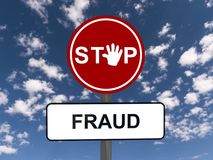7 Ways to Detect Identity Theft

The following 7 ways to detect identity theft are the most critical ones that we wanted to bring up to the attention of our readers. If you follow these simple steps and incorporate them into your daily life, you should be able to detect identity theft completely and quickly.
List of 7 Ways to Detect Identity Theft
1. Review credit reports periodically – Anyone can purchase a copy of their credit reports from any of the major credit reporting agencies. Some countries even require consumer reporting agencies to offer free credit reports to consumers and identity theft victims. For example, if you live in the United States, you can order one free credit report from each of the major three credit reporting agencies once per year. The best way to benefit from this opportunity is to order one credit report from each agency every 4 months so that credit report review can be spread throughout the year in order to detect identity theft as early as possible and receive the maximum benefit.
2. Review monthly statements – If you have accounts, chances are that you receive account statements monthly, quarterly or annually. Don’t just trash these statements if you have established automatic payments, or if you think that you have no transactions, or, if you think the statement is taken care of by another party and that you have no interest. This is not a way of thinking that could benefit you. Your statements can reveal unauthorized transactions which you can report and clear IF you detect them on time.
3. Review insurance benefit statements – If you visit a doctor, chances are that you receive an invoice from your doctor and a benefit summary statement from your insurance company. We tend to normally just trash the insurance statement thinking that the insurance company will just pay the doctor and the statement is a courtesy letter which is true. However, there is a chance that the insurance company is notifying you that they will not pay part or full amount of the doctor’s payment request which will result in a late fees and possibly collection letter from the doctor if you continue to ignore the subsequent letters. Also, there is chance that you may detect a health service or product related transaction which you do not recognize. Medical identity theft is on the rise and it often affects patients more than just financially. Medical fraud can actually alter your medical records and result in the wrong diagnosis and medication during your future doctor visits, especially, as we move toward a centralized medical records management system where health providers and insurers will share a common database to exchange information.
4. Review account activities – If you have access to your accounts online or by phone, you could review your account activity daily to detect unauthorized transactions sooner rather than later when you review your monthly account statement or your quarterly credit report. To detect fraud quickly in our existing accounts, this item from our 7 ways to detect identity theft list is probably the second best option after the next item.
5. Activate account alerts – As mentioned above, this item from our list of 7 ways to detect identity theft is the best option for detecting fraud in existing accounts. Some accounts, especially financial accounts offer a feature which if setup properly will send you emails and text messages when a transaction occurs according to your settings. For example, a checking account activity alert system can be set up to send you a message every time a debit transaction of $100 or greater occurs. Make sure you don’t set your setting too low or otherwise you will be bombarded with automated messages.
6. Read all letters – We all get a ton of mail in our mailbox and we often tend to trash these letters because we don’t immediately recognize the sender. This is a big mistake because some of these letters may be from companies which are trying to warn us of a fraud case, recent data breach, or unpaid bills which might indicate a serious case of identity theft. You should open the letters and read the content before trashing them. Also, before you trash the ad papers, make sure there are no letters inserted in between by accident.
7. Sign up for automated identity monitoring – The last item in out 7 ways to detect identity theft is automated identity monitoring such as credit report monitoring which is very beneficial because the system will send you messages about changes in your consumer reports as they occur. This service not only provides fast detection of potential fraudulent transactions before you have a chance to review your quarterly credit report, but also it might reveal unknown transaction which you failed to detect during your own review process described above. This process will hep you detect fraud quickly if a new account is established under your name, if a new address is reported, or if there are credit inquiries from places you have not contacted..








